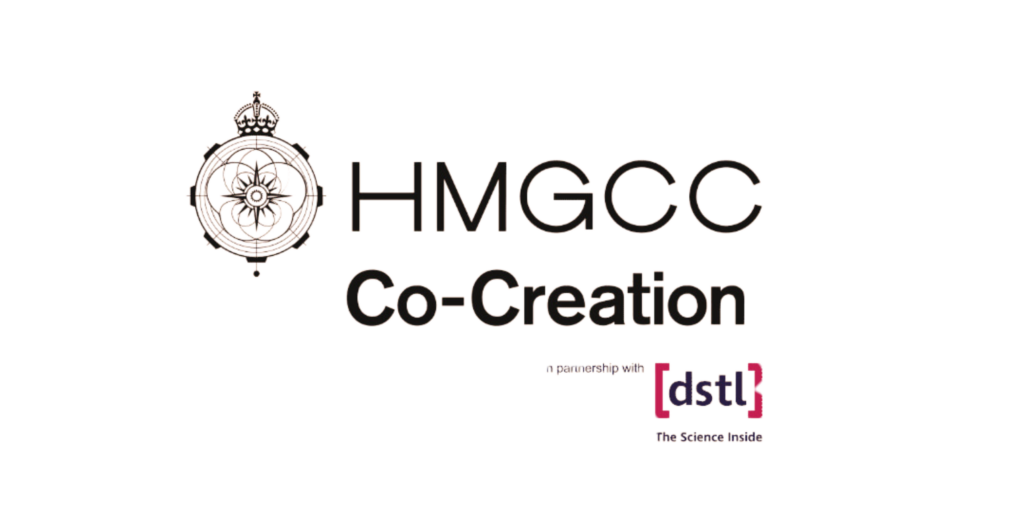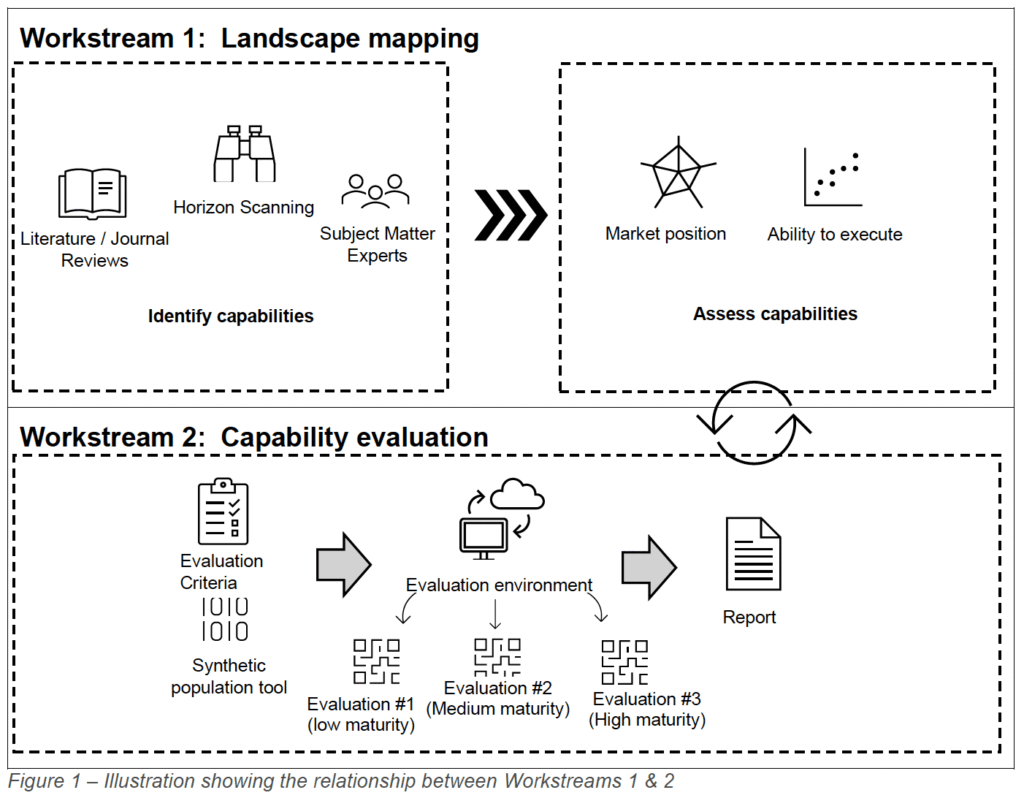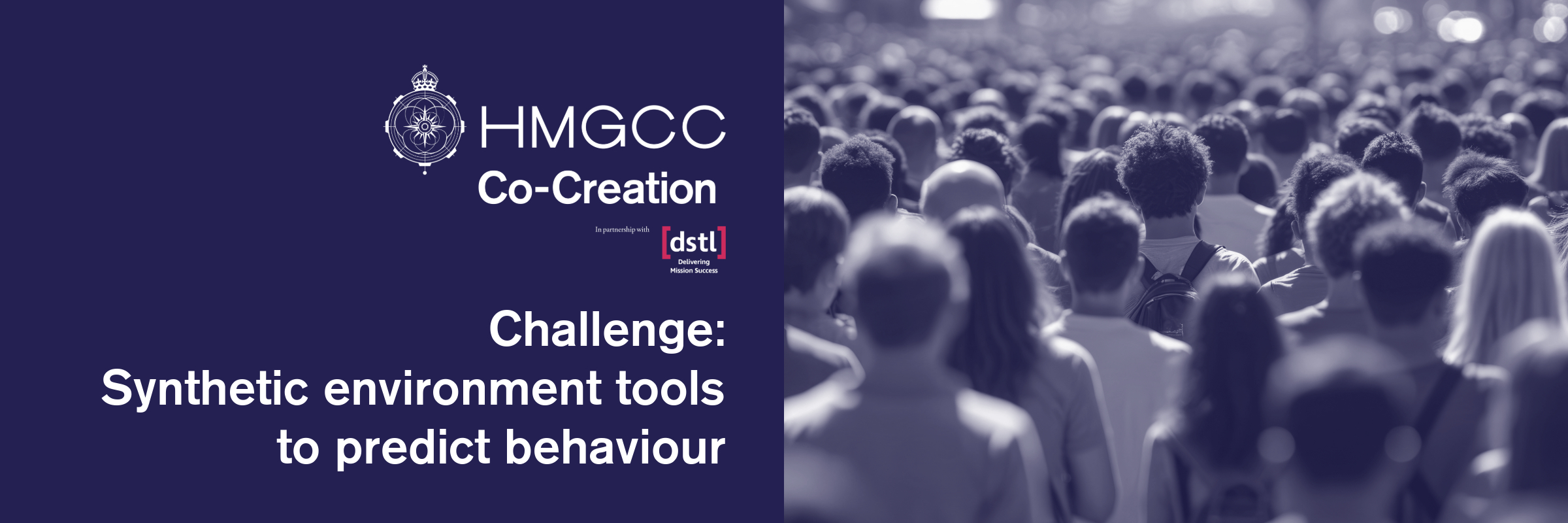
Crisis contingency is about predicting people’s responses to threat or danger, to help keep them safe in the future. HMGCC Co-Creation’s latest challenge is seeking to evaluate tools that provide a synthetic environment to simulate how populations might respond to scenarios such as widespread disinformation or terrorism.
Organisations are being invited to apply for workstream one, workstream two, or both.
- Workstream one is to undertake paper-based landscape mapping to evaluate synthetic environment tools (landscape mapping).
- Workstream two is to provide the evaluation environment for these tools.
- Experts who have a tool they would like to be evaluated as part of the challenge can register their interest.
HMGCC Co-Creation will provide funding for time, materials, overheads and other indirect expenses.
Technology themes
Artificial intelligence, behavioural and social sciences, data science and engineering, digital twinning, information technology, modelling and simulation, psychology and sociology.
The challenge
Context of the challenge
National security needs the right tools to help it predict population responses, in a bid to be more resilient and to help protect the nation against threats such as terrorism or disinformation. All use of this technology needs to be legal, necessary and proportionate.
For this reason, HMGCC Co-Creation wants to find and evaluate tools that can create a synthetic environment of a population, with a varying degree of market maturity, to simulate responses to certain scenarios and help in crisis planning.
To assure that national security invests in the tools that give the greatest chance of success, HMGCC Co-Creation are co-ordinating a challenge to landscape map tools available or in development, in parallel to capability evaluation.
The challenge is being delivered across two parallel workstreams delivered over a period of 18-weeks, as illustrated below:

The gap
There is an ever-present threat from radicalisation and extremist ideology. It is difficult to predict the effect of world events and what disinformation may have, both in the UK and globally.
This challenge is exploring whether research and developments into advanced synthetic environments and AI could be used to help national security resilience.
Workstream one: Landscaping mapping
HMGCC Co-Creation seeks diverse expertise in synthetic environments, digital twinning, software, AI, psychology, sociology, behavioural science and potentially other disciplines.
This workstream is to identify current and future synthetic environment solutions and to develop an assessment framework which will be used to evaluate these capabilities on paper.
This would be an iterative agile process between the solution provider and the challenge sponsors to provide insight into the evaluation criteria and will feed into workstream two.
Workstream two: Capability evaluation
Organisations in this workstream would provide the evaluation environment and will undertake the performance assessments. This includes defining and executing the processes/procedures to evaluate and report on the effectiveness of up to five synthetic environment tools. We will work iteratively with the solution provider to detail testing scenarios and curate an easy/medium/difficult scenario and predictions, potentially based on historical events.
The solution provider(s) from workstreams 1 and 2 are expected to work closely together, co-ordinated by HMGCC Co-Creation, to ensure feedback between both teams.
Expressions of Interest: Tool Vendors
We also want to hear from tool vendors interested in having their product(s) evaluated as part of the project. If you are interested in having your tool evaluated, please send an email expressing your interest to cocreation@hmgcc.gov.uk.
Example use case
Scenario 1:
Jay is a lead researcher in UK national security, working closely with US and European partners to prevent terrorist activity.
Amid the potential threat of radicalisation, disinformation and the consequences they can have, the work of his team is vital in making sure the UK contingency response is accurate and well-judged.
His team is leading on using a new simulation to increase efficiency and confidence in predictions. The synthetic environment tool, backed up with training data sets, provides a series of possible events, with confidence scores against each one. This works at pace and is used, alongside other methods, to feed into senior decision makers.
Scenario 2:
Jay is also looking to utilise the synthetic environment tool to provide training for counter-terrorism personnel.
In this simulation, he has programmed a significant world event, followed by a wave of disinformation targeted at radicalising certain parts of society. This is a sandbox environment meaning that the trainees can make almost any decision possible, as in real-life. The simulated environment can then play out these scenarios over several simulated years, showing possible impacts of decisions made.
Using the simulated environment, new training and lessons learned are able to be carried out at pace.
Thanks to the work of Jay’s team and the simulated environment, senior decision makers gain valuable experience and feedback on how their decisions may play out in highly pressurised situations.
Project scope
We are seeking applicants to deliver workstream one, workstream two or a combination of both. Please make it clear in your application which workstreams you are bidding for.
HMGCC Co-Creation will provide the solution provider delivering workstream two the additional reasonable call-off costs of up to £30,000 (excluding VAT) during the project to support third-party charges for selected tools.
Tools and assessment characteristics to consider:
- Take a portfolio approach of tools to evaluate, with a mixture of commercially available and lower technology readiness disruptive technology.
- The type of data used to underpin synthetic environments.
- The type of foundational models used to predict outcomes.
- Whether the tool is so specific to the UK, it would not be applicable to other countries and demographics.
- Whether the solution works in other partner countries with different cultures and languages.
- How the model could be evaluated.
- Confidence levels in the prediction of events.
- The complexity and detail involved in the predictions.
- Explainability and confidence in decision making.
- If the solution could be hosted in both cloud or on-premise hosting.
- Could a tool be further trained in-house by national security?
Key dates
Monday 4 August 2025
Competition opens
Tuesday 26 August 2025 at 10:00am (UK time)
Clarifying questions submission date
Wednesday 27 August 2025
Clarifying questions published
Thursday 4 September 2025 at 5:00pm (UK time)
Competition closes
Tuesday 16 September 2025
Shortlisted applicants notified
Tuesday 23 September 2025
Pitch day in Milton Keynes
Monday 29 September 2025
Pitch Day outcome
Friday 3 October 2025
Commercial onboarding begins*
*Please note, the successful solution provider will be expected to have availability for a 1-hour onboarding call via MS Teams on the date to be specified to begin the onboarding/contractual process.
Monday 3 November 2025
Target project kick-off
Eligibility
This challenge is open to sole innovators, industry, academic and research organisations of all types and sizes. There is no requirement for security clearances.
Solution providers or direct collaboration from countries listed by the UK government under trade sanctions and/or arms embargoes, are not eligible for HMGCC Co-Creation challenges.
